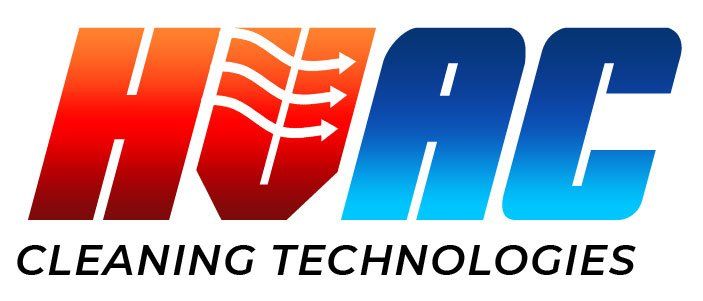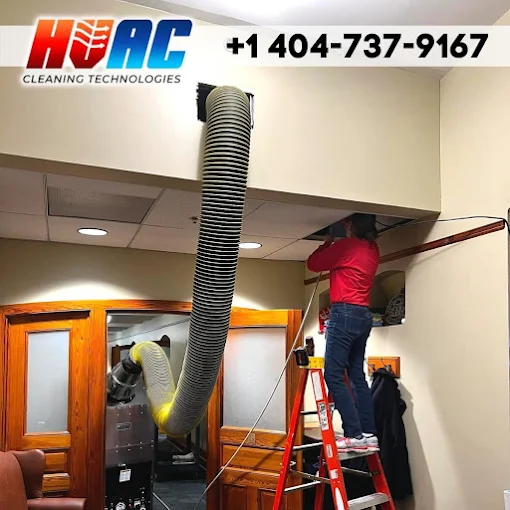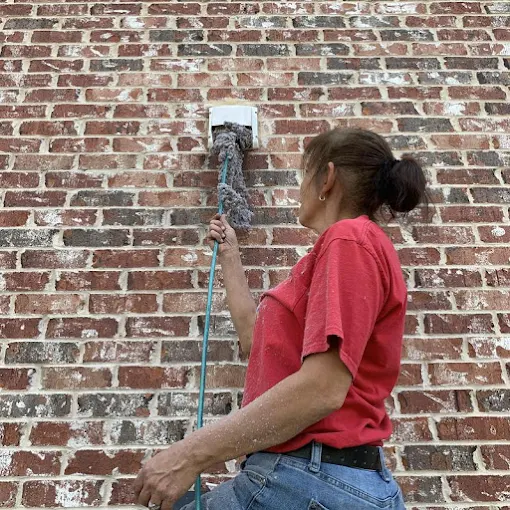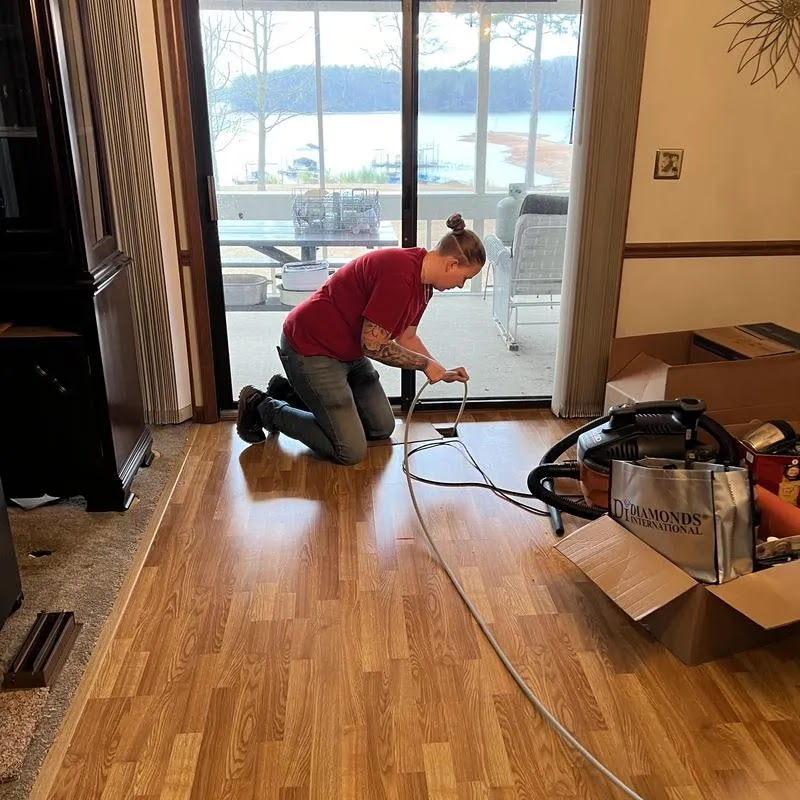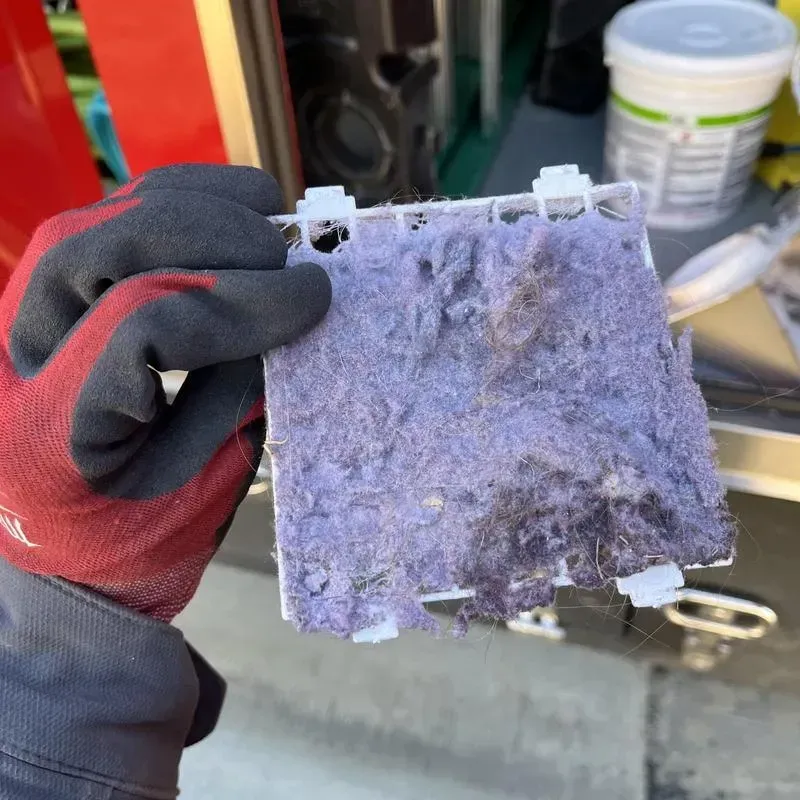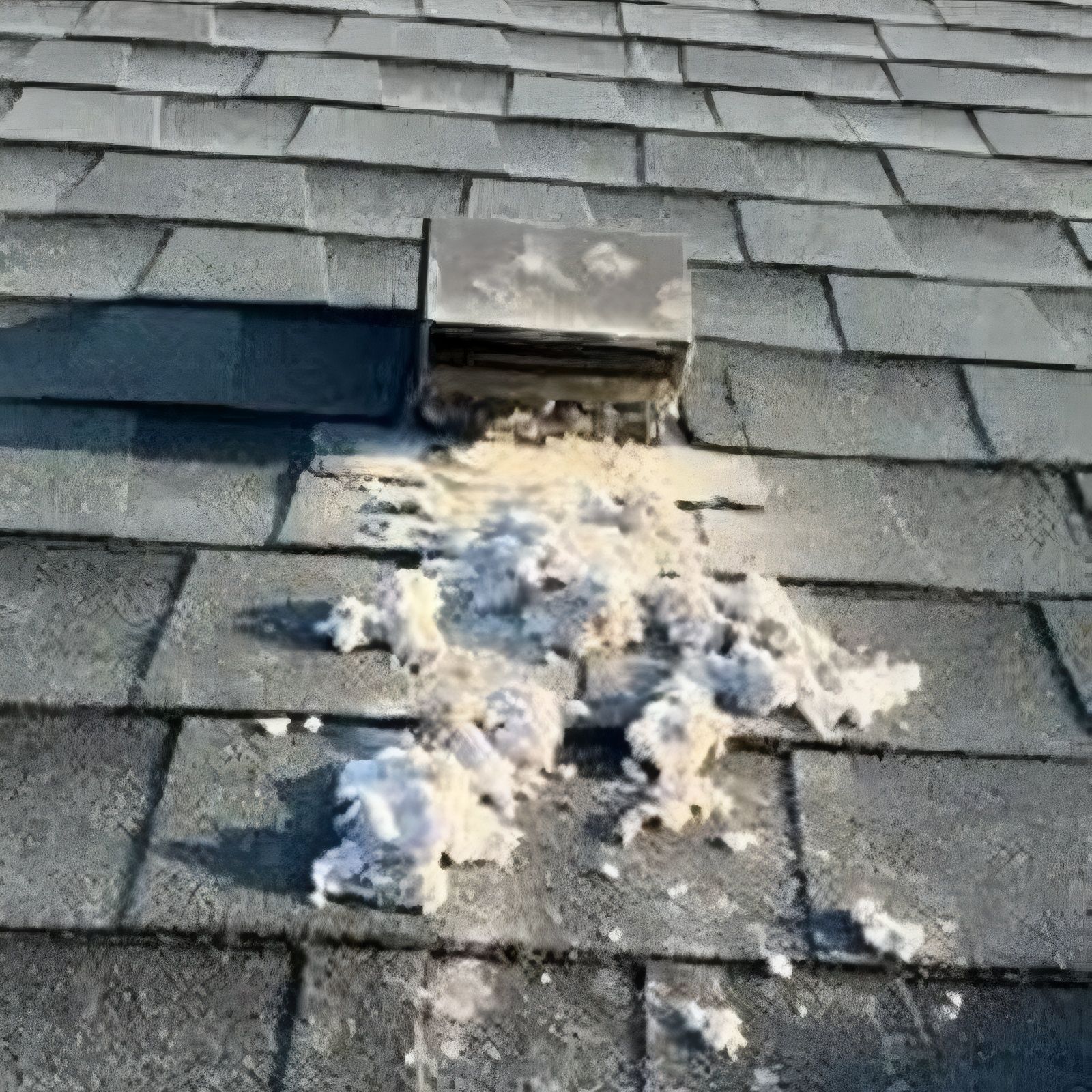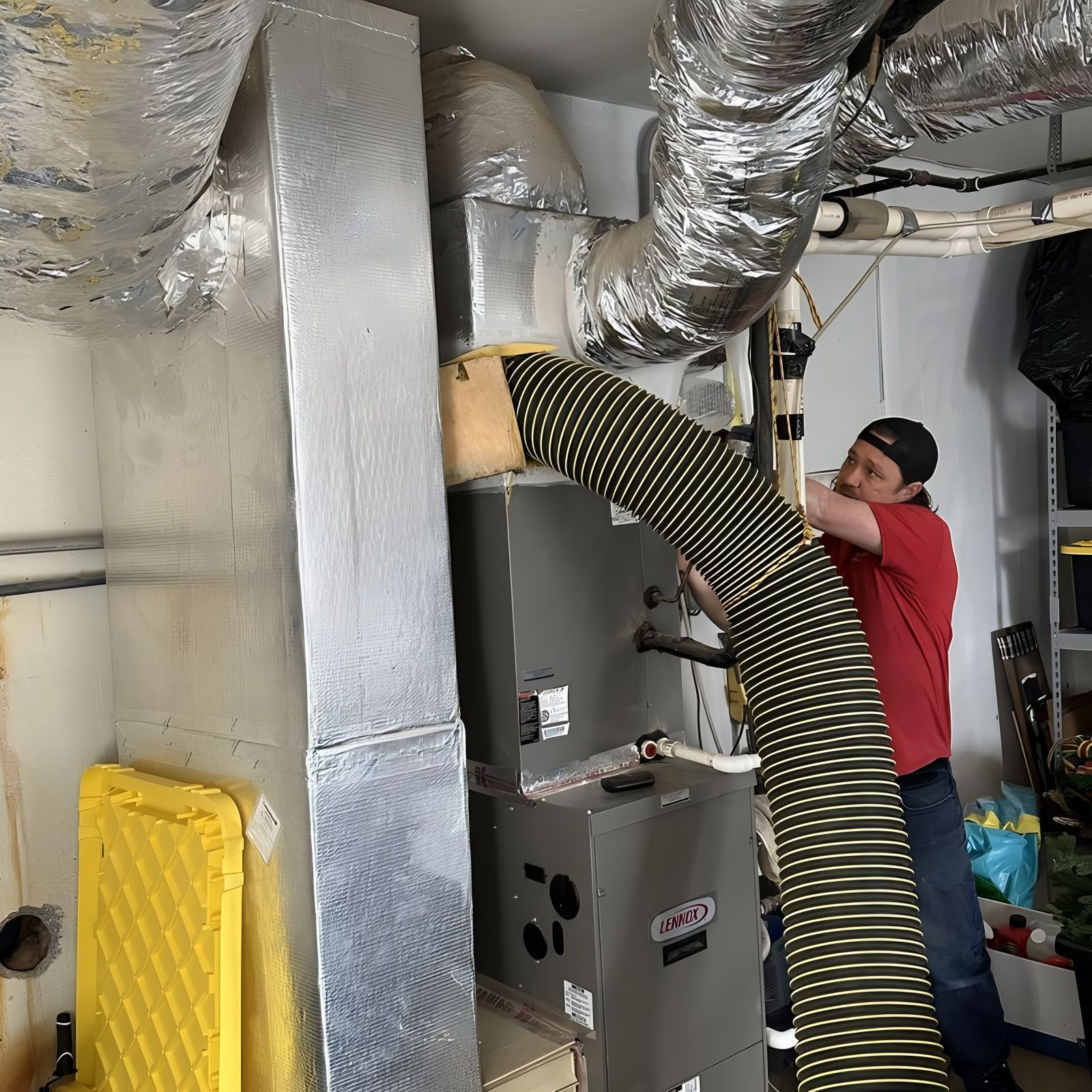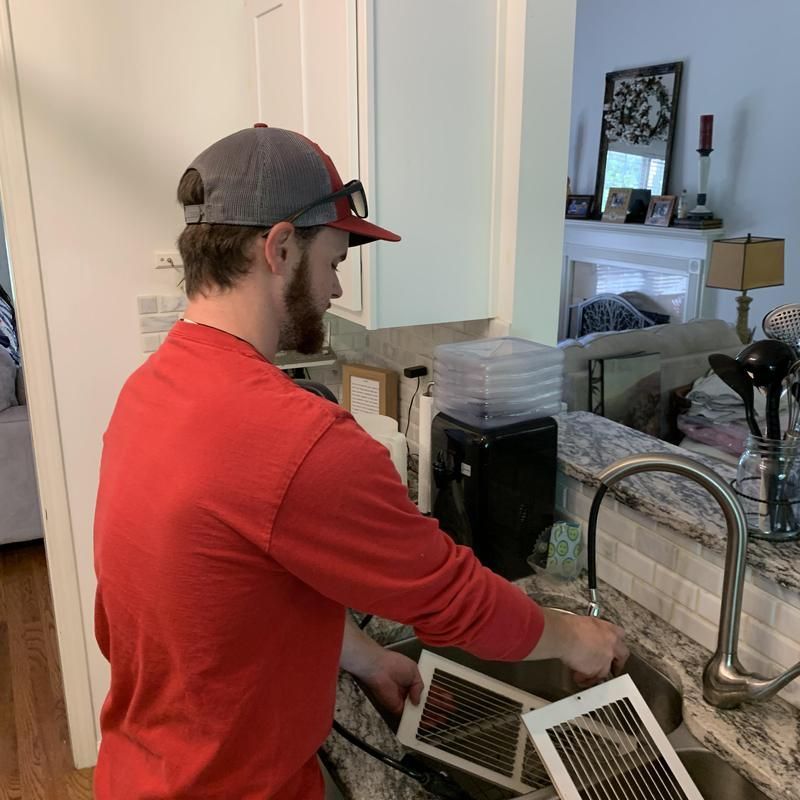Health Risks of Poor Indoor Air Quality
Indoor air quality (IAQ) significantly affects our daily health and comfort. Contaminants in our homes and workplaces can lead to both short-term irritations and long-term health problems. This article reviews the major health risks from poor indoor air quality and explains how air duct cleaning in Cumming GA, pollutant control, and complementary solutions improve well-being.
Key Takeaways
- Poor indoor air quality can cause respiratory issues, allergies, and chronic conditions.
- Mold, dust mites, and VOCs may trigger asthma and other breathing problems.
- Regular duct maintenance and air purifiers are essential to reduce these risks.
- Early symptom detection and preventive measures can boost long-term indoor air quality.
What Are the Main Health Risks Caused by Poor Indoor Air Quality?
Pollutants such as mold spores, dust mites, and chemical vapors can lead to respiratory issues, allergic reactions, and even damage lung function. Repeated exposure increases inflammation and strains the immune system, often resulting in headaches, fatigue, and worsening asthma. Over time, this adversely affects productivity and overall quality of life.
How Does Mold Exposure Affect Respiratory Health?
Mold releases spores and mycotoxins that irritate the respiratory tract, leading to coughing
, wheezing, and shortness of breath, according to the American Lung Association. Prolonged exposure may worsen asthma and COPD, especially in poorly ventilated spaces.
What Are the Symptoms of Dust Mite Allergies and Asthma Triggered by Indoor Air?
Dust mite allergens found in bedding and carpets trigger sneezing, nasal congestion, itchy eyes, and asthma attacks. These symptoms commonly worsen at night, interfering with sleep and daily energy levels.
How Do Volatile Organic Compounds (VOCs) Impact Your Wellbeing?
VOCs, emitted from paints and cleaning agents, may cause dizziness, headaches, and irritation in the eyes and throat. Long-term exposure has been linked to severe issues including liver, kidney damage, and a potential increase in cancer risk.
What Is Sick Building Syndrome and How Is It Linked to Poor Air Quality?
Sick Building Syndrome (SBS) is a collection of symptoms such as headaches, dizziness, nausea, and trouble concentrating. These are commonly experienced by occupants of buildings with poor ventilation and high pollutant levels. SBS can reduce productivity and increase absenteeism when not addressed.
How Does Poor Indoor Air Quality Affect Vulnerable Groups Like Children and the Elderly?
Children and seniors are more sensitive to indoor pollutants. In children, pollutants may impair lung development, while in seniors they can contribute to chronic respiratory and cardiovascular issues. Even low pollutant levels can trigger stronger reactions in these groups.
How Does Duct Maintenance Improve Indoor Air Quality and Reduce Health Risks?
Regular duct maintenance removes dust, allergens, and other pollutants from your HVAC system, preventing contaminated air from recirculating. Keeping ducts clean reduces mold and bacterial buildup, optimizes HVAC performance, and improves energy efficiency.
What Are the Benefits of Regular Duct Cleaning for Your Health?
Cleaning air ducts reduces allergen circulation and improves respiratory health by lowering asthma symptoms and promoting better air quality. Studies suggest that regular maintenance can also improve lung function and cut down on doctor visits.
How Often Should You Clean Your Air Ducts to Maintain Healthy Air?
Experts recommend duct cleaning every 3 to 5 years, though frequency may increase following renovations or in high-pollution areas. Routine HVAC inspections can help determine the best cleaning schedule.
What Is the Step-by-Step Process of Professional Duct Cleaning?
A professional duct cleaning process typically includes an initial inspection, high-powered vacuuming to remove dust, application of cleaning agents to eliminate microbial growth, and a final sanitization of ducts to ensure lasting air quality improvements.
How Does Duct Sealing Enhance Air Quality and Energy Efficiency?
Duct sealing prevents leaks where unfiltered air might mix with conditioned air. This improves energy efficiency by ensuring that heated or cooled air reaches its intended area and helps maintain a cleaner indoor environment.
Which Indoor Pollutants Are Most Harmful and How Can They Be Controlled?
Indoor pollutants include allergens, mold spores, and chemical compounds like VOCs that seep in from various sources. Effective control involves reducing pollutant sources, sealing leaks, and using air purification technology along with regular cleaning and proper ventilation.
What Are Common Indoor Allergens and Their Health Effects?
Common allergens such as dust mites, pet dander, and mold spores can trigger allergic reactions and asthma episodes. Their effects range from mild irritations to severe breathing difficulties. Regular cleaning and HEPA filters can help capture these particles.
How Can Mold Growth in HVAC Systems Be Prevented and Treated?
Maintaining low humidity and performing routine duct cleaning are key to preventing mold growth. If detected, professional remediation is required to remove mold and address moisture issues that enable its growth.
What Are the Sources and Risks of VOCs in Indoor Environments?
VOCs come from products like paints and cleaning agents. They can irritate the eyes, nose, and throat and may lead to more serious long-term health complications. Reducing the use of high-VOC products and improving ventilation are effective control strategies.
What Are Effective Solutions Beyond Duct Maintenance to Improve Indoor Air Quality?
Beyond duct cleaning, solutions such as air purifiers, increased ventilation, and regular indoor air quality (IAQ) monitoring are essential. Combined, these strategies reduce both immediate and long-term exposure risks, fostering a healthier indoor environment.
How Do Air Purifiers Work to Remove Indoor Pollutants?
Air purifiers use filters like HEPA or activated carbon to trap particulate matter and chemicals. They help remove allergens, VOCs, and other pollutants, making them especially useful in areas with poor ventilation.
Which Types of Air Purifiers Are Best for Different IAQ Issues?
HEPA units are ideal for capturing small particles like dust and pollen, while activated carbon filters target odors and VOCs. Ionizers also help in reducing certain microbial contaminants. The right choice depends on the specific pollutants present and room size.
How Can IAQ Monitoring Systems Help Maintain Healthy Air?
Monitoring systems track levels of common pollutants like particulate matter, VOCs, and CO₂ in real time. This data assists in adjusting ventilation and purification measures, ensuring early detection of air quality issues.
How Can You Recognize and Respond to Symptoms Caused by Poor Indoor Air Quality?
Symptoms such as persistent coughing, headaches, allergies, and fatigue may indicate poor indoor air quality. Early recognition allows prompt action, improving ventilation or seeking professional IAQ assessments, to prevent long-term health damage.
What Are Early Signs of Respiratory Problems Linked to IAQ?
Minor breathing difficulties, recurring coughs, and mild headaches can be early signals of worsening air quality. Paying attention to these signs helps in recognizing issues before they escalate.
When Should You Seek Medical Advice for IAQ-Related Health Issues?
If symptoms like severe shortness of breath or frequent respiratory infections persist despite improved air conditions, a medical evaluation is advisable to prevent further complications.
How Can IAQ Assessments Help Diagnose and Prevent Health Risks?
Professional IAQ assessments involve detailed testing for pollutants such as VOCs, mold spores, and particulate matter. These evaluations identify problem areas and guide targeted remediation, helping to sustain safe air quality levels.
What Are the Long-Term Health Consequences of Ignoring Poor Indoor Air Quality?
Overlooking poor indoor air quality can eventually lead to chronic respiratory diseases, cardiovascular issues, and neurological problems. Constant exposure weakens the lungs and immune system, while increasing medical expenses and reducing quality of life.
How Does Chronic Exposure to Indoor Pollutants Affect Lung Function?
Chronic exposure results in ongoing inflammation and scarring of lung tissues, gradually reducing lung efficiency. This may eventually contribute to disorders like chronic bronchitis or emphysema.
Can Poor IAQ Increase the Risk of Chronic Diseases?
There is a clear association between poor indoor air and higher risks for chronic conditions such as asthma, heart disease, and possibly cancer, largely due to the long-term inflammatory response from pollutants.
What Are the Economic and Quality-of-Life Impacts of IAQ-Related Illnesses?
Increased medical expenses, lost work productivity, and diminished overall well-being are significant risks of poor indoor air quality. Improved air standards can mitigate these impacts and enhance life satisfaction.
How Can You Maintain Healthy Indoor Air Quality Year-Round?
Maintaining healthy indoor air involves a combination of regular HVAC maintenance, proper ventilation, and effective air filtration. Seasonal shifts and building occupancy demand a proactive IAQ management plan for sustained health benefits.
What Are Best Practices for HVAC System Maintenance to Support IAQ?
Routine filter changes, scheduled duct cleaning, and periodic system inspections by certified Cumming air duct cleaning professionals prevent contaminants from recirculating. These practices optimize system efficiency and support consistent air quality.
How Does Proper Ventilation Reduce Indoor Air Pollutants?
Effective ventilation introduces fresh outdoor air while expelling stale indoor air. This process dilutes indoor contaminants and is aided by strategically placed vents and energy recovery ventilators.
What Lifestyle Changes Can Improve Indoor Air Quality at Home?
Simple changes like reducing harsh chemicals, adding indoor plants, regular cleaning, using exhaust fans during cooking, and controlling moisture can significantly improve IAQ and prevent mold growth.
Final Thoughts
Poor indoor air quality poses serious health risks that affect short-term comfort and long-term well-being. By understanding pollutant sources, maintaining ducts, and adopting complementary IAQ strategies, you can protect your health and improve quality of life. Proactive assessments and regular maintenance lead to healthier air and a safer living environment for everyone.
